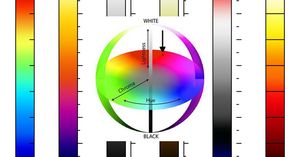What is Color?

We can all speak about color, but what exactly is color? If you were to ask a color professional about color, they would speak to you about things like hue, shade, tint, saturation, and tone. While I appreciate this conversation, how is it that we can best assure that the color that we desire is the color that is produced?
So, what is color? In a short sentence, color is the human visual perception of light. To put it in a different way, perceived color is the product of a unique environment as it relates to light being reflected off from a given object which is in turn interpreted by the human brain after the light is absorbed into the retina.
I know this seems somewhat straight forward as we think about the relationship between light and color, but if you’re like me your inner voice conflicts with what you are reading. With a little bit of thought it is quite clear that there is way too much variability within the list of potential environments. Are we indoors, or out of doors? Is it the noon hour, or the golden hour? The truth is color can look drastically different between environments. This effect is called metamerism, and we’ve all been a victim at some point while picking out our outfits in a poorly lit closet. And we have all this potential variability even before we add the individual human being into the mix. Much like a musical gift, or athletic talent, some of us are simply much better at perceiving slight variations in color.
In an effort to assure the accuracy of a given color, coatings manufacturers utilize a three-dimensional color space calculation to measure each of the variables outlined above within a defined environment. Both the Hunter Scale method and the CIE Lab method measure color within this three-dimensional space. These methods measure brightness (L – value), red versus green (a – value), and yellow versus blue (b – value). Once the data is collected, a mathematic value can be assigned to the produced color and in turn measured against the desired match for color accuracy.

The most accurate color matches take these factors into account and utilize the scientific tools as a method of confirmation. We should begin first with defining the appropriate environment as we consider the light source, a viewing angle, and the specifics of how that object will be viewed. Once the environment has been considered, numeric color analysis data is tabulated and considered against the match. An acceptably accurate match is a visually consistent color with supporting data confirming that the match is within the same three-dimensional space for brightness, hue, and saturation.
Back to overview